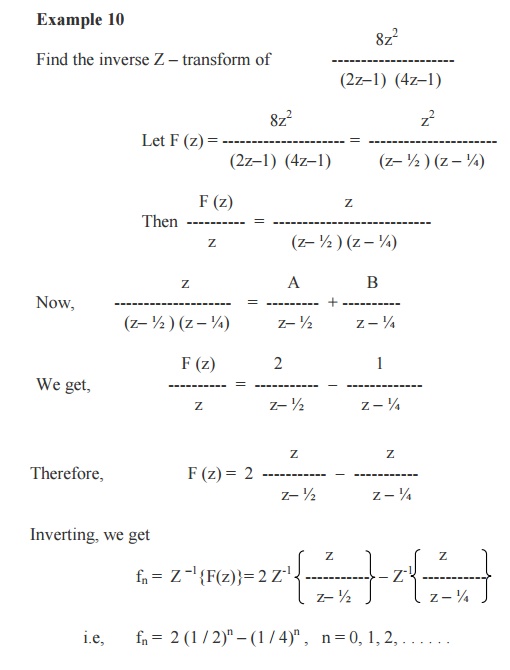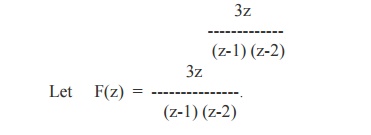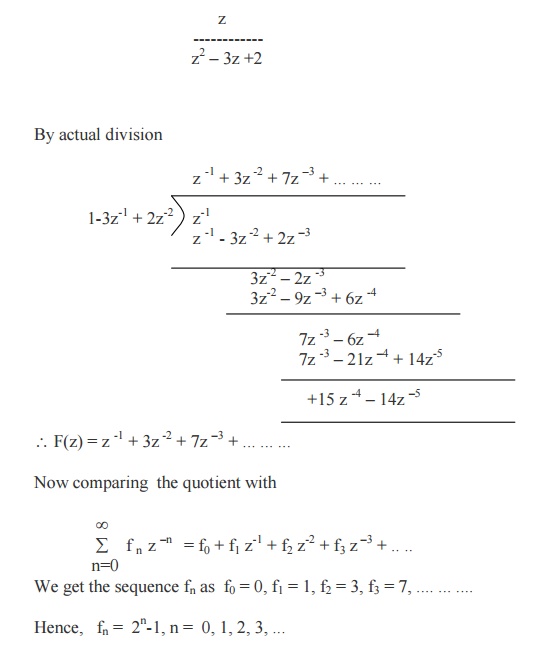Chapter: Mathematics (maths) : Z-Transforms and Difference Equations
Inverse Z-Transforms
Inverse Z –Transforms
The inverse Z –transforms can be obtained by using any one of the following methods.They are
I.Power series method
II. Partial fraction method
III. Inversion Integral method
IV. Long division method
I. Power series method
This is the simplest method of finding inverse Z –transform. Here F(z) can the be expanded in a series of ascending powers and the coefficient of z –n will be the of z desired inverse Z- transform.
Example 8

II. Partial Fraction Method
Here, F(z) is resolved into partial fractions and the inverse transform can be taken directly.
Example 9
Find the inverse Z –transform of



Inversion Integral Method or Residue Method
The inverse Z-transform of F (z) is given by the formula

Sum of residues of F(z).zn-1 at the poles of F(z) inside the contour C which is drawn according to the given Region of convergence.
Example 12
Using the inversion integral method, find the inverse Z-transform of

Its poles are z = 1,2 which are simple poles.
By inversion integral method, we have

\Sum of Residues = -3 + 3.2n = 3 (2n-1).
Thus the required inverse Z-transform is
fn = 3(2n-1), n = 0, 1, 2, …
Example 13
Find the inverse z-transform of

The pole of F(z) is z = 1, which is a pole of order 3. By Residue method, we have

IV. Long Division Method
If F(z) is expressed as a ratio of two polynomials, namely, F(z) = g(z-1) / h(z-1), which can not be factorized, then divide the numerator by the denominator and the inverse transform can be taken term by term in the quotient.
Example 14

Thus F(z) = 1 + 3z-1 + 3z-2 + 3z-3 + . . . . . .
Now, Comparing the quotient with

Example 15
Find the inverse Z-transform of


Related Topics